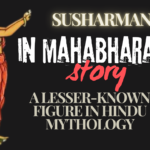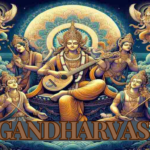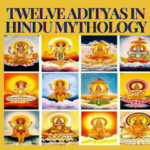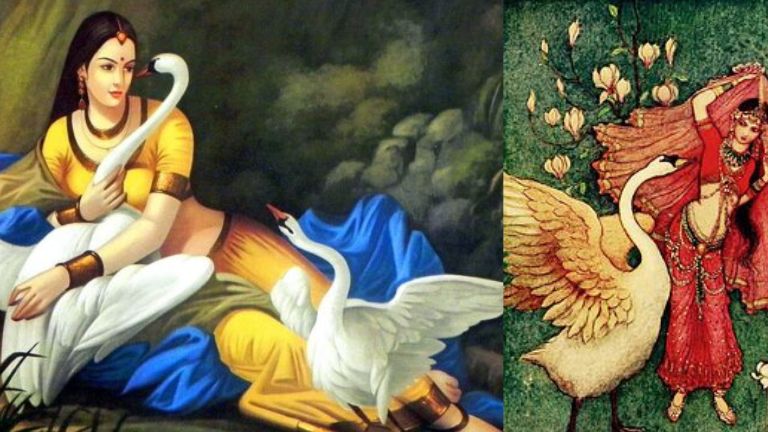In the grand tapestry of ancient Indian epics, few stories stand out as poignantly as the tale of Damayanti, a princess renowned for her beauty, grace, and unwavering devotion. Found within the pages of the Vana Parva, a book from the great epic Mahabharata, the story of Damayanti and her beloved, King Nala of the Nishadha Kingdom, continues to captivate readers and listeners alike. This narrative is not just a simple love story; it is a complex tale of loyalty, virtue, trials, and the triumph of true love.
The Origins of Damayanti: A Princess of Vidarbha.
Damayanti was the daughter of Bhima, the king of the Vidarbha Kingdom. From her early days, she was renowned for her unparalleled beauty and wisdom. It is said that the gods themselves marveled at her radiance. However, it wasn’t just her physical beauty that made Damayanti stand out; she was also known for her profound sense of righteousness and deep compassion. As she grew, tales of her virtues spread far and wide, reaching the ears of many suitors, including the mighty King Nala of Nishadha.
The Fateful Swayamvara: Love and Destiny Intertwined.
In the ancient tradition of swayamvara, a ceremony where a princess chooses her husband from a group of suitors, Damayanti’s swayamvara was a grand event. Kings and princes from across the land gathered, eager to win her hand. However, Damayanti’s heart had already been captured by Nala, even before they met in person. Through a divine intervention, they communicated with each other, and a deep love blossomed between them.
At the swayamvara, the gods themselves descended to seek her hand. Yet, Damayanti, in a display of remarkable discernment, chose Nala over the gods, reaffirming her deep commitment to him. This decision set the stage for one of the most enduring love stories in Indian mythology.
Why is Damayanti famous?
In the Mahabharata, Damayanti is a princess whose magnificence is outperforming to such an extent that she is sought after by divine beings and people the same. She is broadly hitched to Nala, the lord of Nishadha, after a muddled series of occasions, including a swayamvara (an occasion where a lady chooses her husband to be from a gathering of admirers).
Trials and Tribulations: The Separation of Damayanti and Nala.
No great love story is complete without its share of challenges, and Damayanti and Nala’s tale is no exception. Soon after their marriage, Nala fell victim to a curse, losing his kingdom and wealth in a game of dice. The once-prosperous king was reduced to a wandering pauper, and the devoted Damayanti chose to accompany him, abandoning her royal comforts.
Their journey through the wilderness was fraught with hardships, and in a moment of despair, Nala left Damayanti alone in the forest, believing that she would be safer without him. This separation marked a dark chapter in their lives, but it also highlighted Damayanti’s unwavering loyalty and strength.
Damayanti’s Lament: A Symbol of Enduring Love.
Separated from her beloved, Damayanti’s sorrow knew no bounds. She wandered through the forests, heartbroken and lost, but never once did she lose hope or faith in Nala’s return. Her laments, filled with longing and pain, are some of the most poignant passages in the Mahabharata. Through her words, she poured out her heart, expressing her deep love and yearning for Nala.
Her suffering, however, was not in vain. Damayanti’s devotion and prayers eventually led to their reunion. With the help of wise and compassionate beings, both human and divine, Nala and Damayanti overcame their trials and were reunited, stronger and more in love than ever before.
The Legacy of Damayanti: An Eternal Icon of Love and Virtue.
The story of Damayanti and Nala is more than just a romantic tale; it is a profound exploration of human emotions, virtues, and the power of love. Damayanti’s character is a testament to the strength and resilience of women, especially in the face of adversity. Her unwavering commitment to Nala, even when faced with insurmountable odds, serves as an enduring symbol of true love and devotion.
In many ways, Damayanti’s story is timeless. It transcends cultural and historical boundaries, resonating with anyone who has ever experienced love, loss, and the hope of reunion. Her tale continues to inspire generations, reminding us that love, when rooted in virtue and trust, can overcome any obstacle.
Damayanti in Popular Culture: A Continuing Legacy.
Even today, the story of Damayanti is celebrated in various forms of art, literature, and performance. From classical Indian dance dramas to modern retellings, her tale continues to captivate audiences. Artists often depict her in moments of deep reflection, pining for Nala, or in scenes of reunion, highlighting the emotional depth of her character.
In contemporary interpretations, Damayanti’s story has been used to explore themes of women’s empowerment, resilience, and the enduring power of love. Her legacy serves as a reminder that true strength lies not in physical prowess but in the purity of one’s heart and the steadfastness of one’s principles.
Disclaimer : While Writing this post have taken some content reference from different blog posts around the web and also chatgpt. If you think I have directly copy paste your content ,please contact me . I assure you that I will remove the content within 24 hours.





